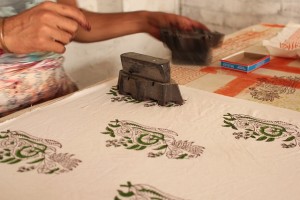 Every one of us has a special talent and a lot of creativity. Some people paint, or take photos. Others love to keep busy with small home improvement projects and decorate their houses with handmade items. And some of the people with skilled hands and rich imaginations make a living by selling their crafted goods.
Every one of us has a special talent and a lot of creativity. Some people paint, or take photos. Others love to keep busy with small home improvement projects and decorate their houses with handmade items. And some of the people with skilled hands and rich imaginations make a living by selling their crafted goods.
Setting up a home-based craft business requires some planning, just like any other business. You should start by getting into the mindset of an entrepreneur: you will be manufacturing goods to sell to customers, not pursuing a hobby. Therefore, you have to hone your skills, make sure that the items you craft are in demand on the market, and that you can provide consistent quality and craftsmanship for all the items you create.
To help you in your pursuit, we have put together the basic steps for setting up your home business:
1. Set-Up a Work Place
As an entrepreneur, you must have a separate area in your home where you will be working. This area must be free from the usual distractions – noise from other family members, the TV set, game consoles, etc. This is where you will be spending all your working hours creating your products. You must keep track of every item you’ve created and make sure that you deliver all the orders on time.
2. Find a Name for Your Business
In business, everything is in its name. For small businesses, the name of the business becomes the brand, so it must tell people something about what you do and what makes you special from other small businesses.
A name such as “Mother Kate’s Home-Baked Cookies”, for instance, tells us that we can expect fresh, homemade, delicious cookies. That sounds promising, therefore some people would order a few cookies to try them. And if the cookies live up to their name, they will order again.
3. Would Anyone Need Your Products?
This is the biggest question any would-be entrepreneur should ask themselves. Your products are made with skill, love and care, but are they useful in any way? The simplest way to test this is by offering some to your family and friends (without telling them that you made them, because they may become biased in your favor). If they say something like “cool, I was wondering if you can find something like this for sale!”, then you’ve got a winning idea.
4. Marketing and Promotion
In order to start marketing your products, you need to take good quality photos of them. This also means thinking about how you plan to package them. You need to invest in adequate packaging materials (tissue paper, cardboard boxes, foam packaging for fragile items). The packaging should be attractive, fit the type of products and have your business name printed on them. All these elements will be added up to the cost of manufacturing, which you will consider when calculating the price per product.
At this point you should also create a website and social media accounts to promote your small business. You probably cannot afford to hire a marketing agency, so you should also set some time aside every day to interact with your potential clients, encourage them to subscribe to your newsletter and, ultimately, buy your products.
5. Deliver Consistent Quality
Your craft business will be successful if you are able to reproduce the same model with the same look, the same characteristics and the same quality. One-of-a-kind items may be unique and hold a special intrinsic value, but they are not marketable items which will sustain your business over the time.
These basic steps are also a test which will help you determine whether your craft can be turned into a profitable business. However, your talent and creativity will help you adapt your products and make them marketable. It only takes a little effort and the will to become an independent entrepreneur.
